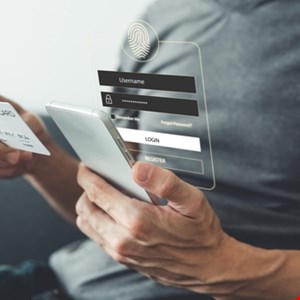The Escalating Threat of Infostealers: A Warning for Australia’s Financial Sector
Recent research conducted by Dvuln, a prominent pen-testing firm, has unveiled a troubling trend: over 30,000 Australians have had their banking credentials compromised by sophisticated infostealers. This alarming statistic emerges from an extensive analysis of infostealer logs spanning from 2021 to 2025, identifying individual banking credentials from customers of four major Australian banks. Although Dvuln opted not to disclose the names of these institutions, the data they gathered raises significant concerns regarding the security of financial transactions in an increasingly digital world.
The analysis revealed a disturbing pattern in the trajectory of stolen credentials. From 2021 to 2023, the researchers observed a consistent rise in the number of compromised credentials. However, a slight decline appeared in 2024. Such fluctuations in data suggest potential shifts in cybercriminal strategies or the efficacy of countermeasures deployed by financial institutions. Regardless, the overall upward trend emphasizes the persistent threats that Australians face when it comes to their banking security.
The rise of infostealers underscores a broader issue in the cybercrime landscape, where attackers leverage these types of malware to gain unauthorized access to various online services without having to infiltrate financial institutions directly. This method of attack can facilitate a range of malicious activities, including account takeovers, fraudulent transactions, and identity theft, which are particularly detrimental to both consumers and service providers within the financial sector. The repercussions of these activities can create cascading effects on the integrity of customer accounts that interact with digital assets, leaving citizens vulnerable to significant financial loss.
Researchers from Dvuln have highlighted that infostealer malware represents a pervasive yet frequently underreported threat to Australia’s financial institutions. This insight demands urgent attention from cybersecurity stakeholders and requires a re-evaluation of existing security protocols to combat this evolving menace effectively.
Understanding Infostealers in Cybercrime
Infostealers are specifically designed pieces of malware that target consumer devices with the intent of harvesting sensitive information such as credentials, authentication cookies, and financial data. Once collected, this stolen information does not remain idle; it is quickly sold on various cybercrime marketplaces. Here, access brokers can acquire this data, providing them with initial access to individual user accounts or even entire organizations.
The operational model doesn’t stop there; once access is obtained, it is often packaged and sold to ransomware operators or other cybercriminals seeking points of entry into enterprises. The information exchanged can be incredibly detailed, spanning various aspects such as system architecture, endpoint security, and potential pathways for lateral movement within the target’s network.
The Dvuln researchers further described the contemporary infostealer economy as a "mature and segmented marketplace," where distinct roles collaborate seamlessly to harvest, distribute, and monetize stolen data on an industrial scale. This complex infrastructure highlights the interconnectivity of cybercriminals, making it increasingly difficult for victims to anticipate and mitigate threats.
Modern Infostealers and the Bypass of Traditional Security Measures
Another concerning revelation from the Dvuln research is that modern infostealers have significantly evolved, allowing them to circumvent traditional security measures, including multi-factor authentication (MFA). Researchers noted that these newer infostealers are capable of capturing authentication cookies, which can grant them access to a user’s sessions that have already been authenticated.
This capability poses a serious security gap, as MFA protections generally only apply during initial login attempts, while subsequent actions rely on cookies or tokens for authorization. By hijacking these tokens, infostealers effectively exploit sessions that have already passed through MFA verification, making it increasingly critical for financial institutions to bolster their application security controls.
In light of these challenges, Dvuln researchers have presented a series of actionable recommendations designed to help financial institutions navigate this evolving threat landscape:
- Enhance security controls beyond simple MFA, advocating for continuous access evaluation for user sessions.
- Increase authentication scrutiny for high-risk transactions, even within already authenticated sessions.
- Establish processes aimed at identifying and invalidating potentially compromised authentication tokens.
- Develop targeted customer awareness campaigns to educate users about the risks associated with infostealer malware.
By implementing these strategies, financial institutions can better protect their customers and themselves from the malicious impact of infostealer attacks, reinforcing the integrity of their digital platforms and restoring consumer confidence in the safety of their banking experiences.


